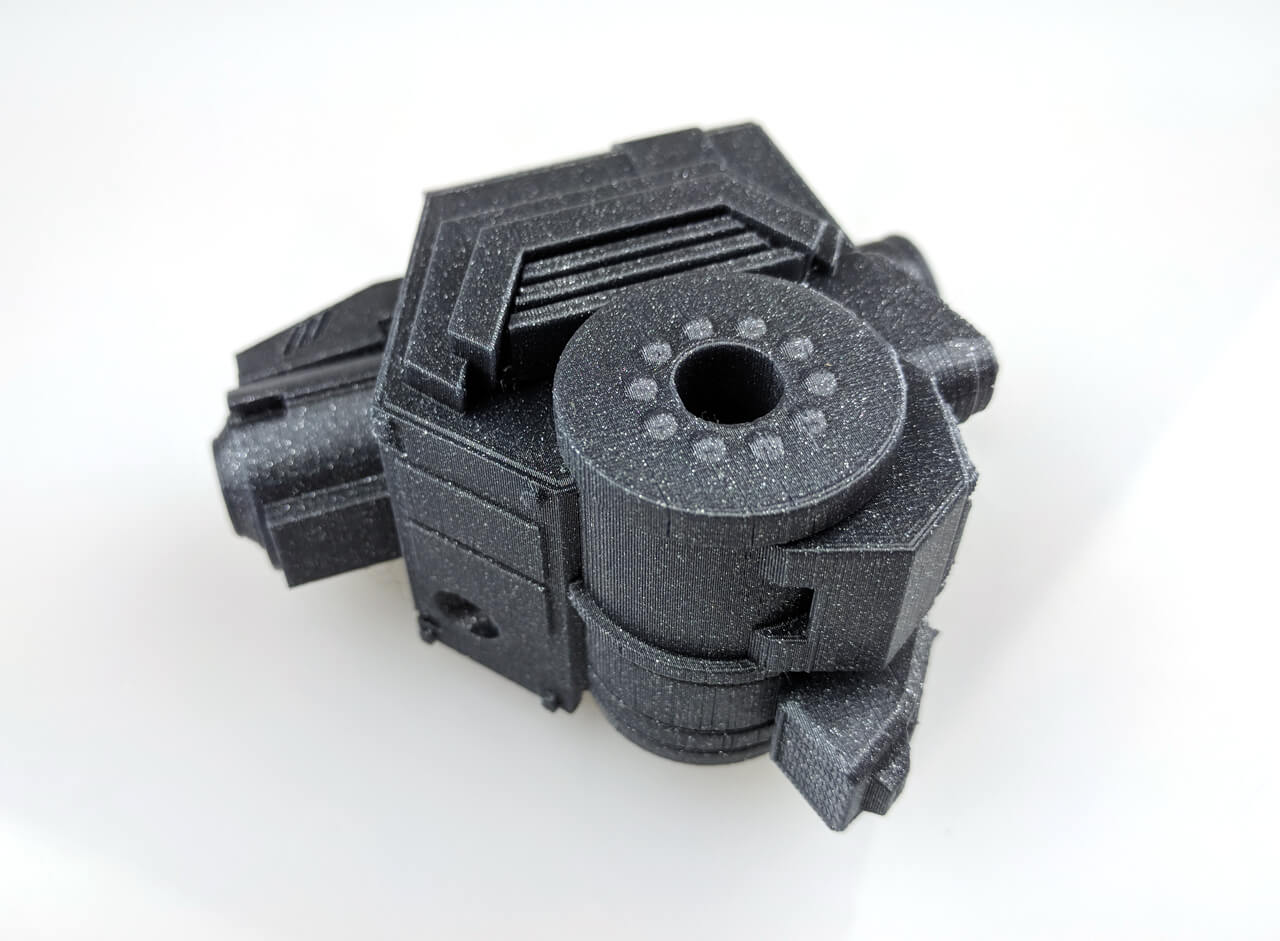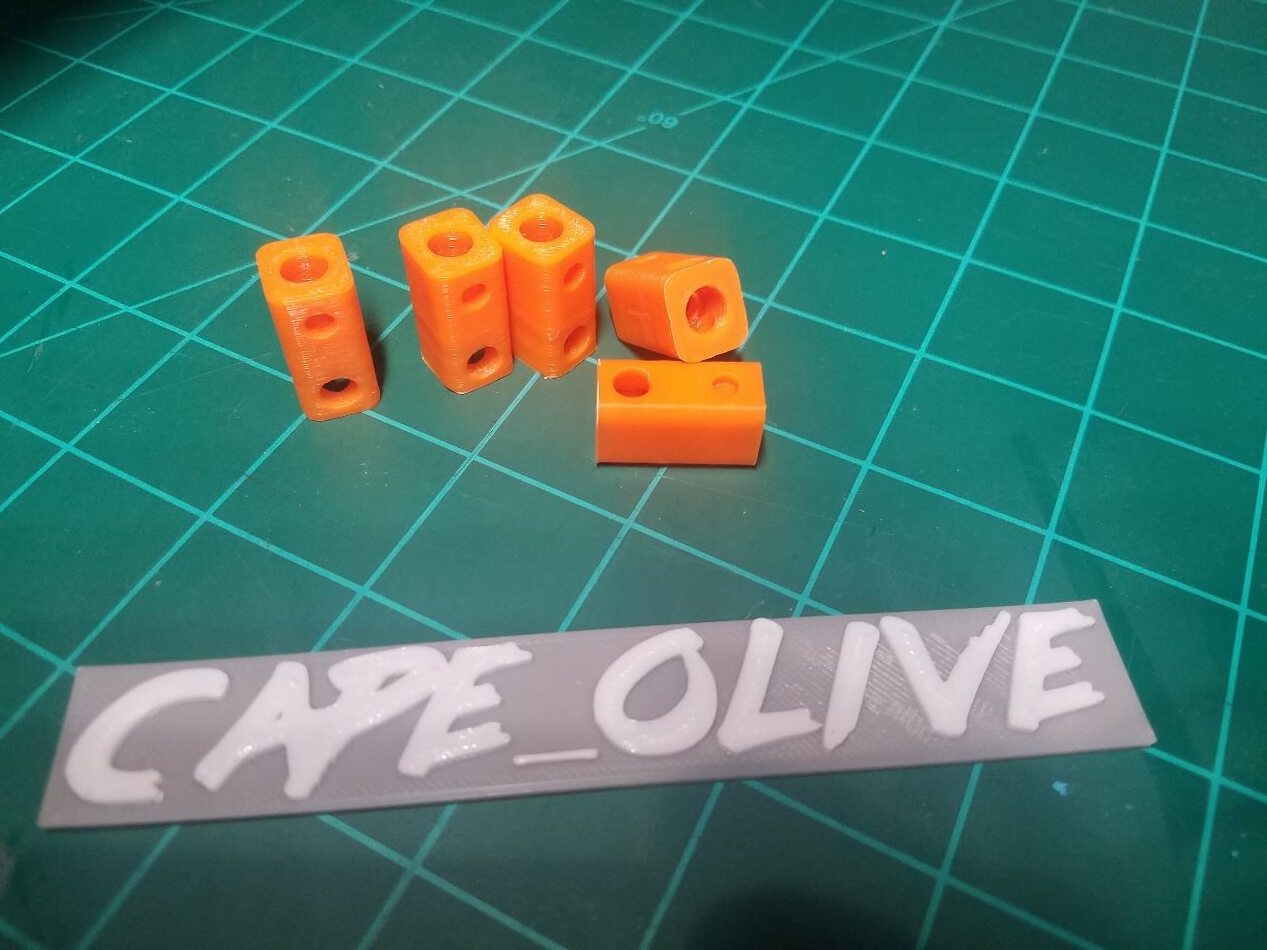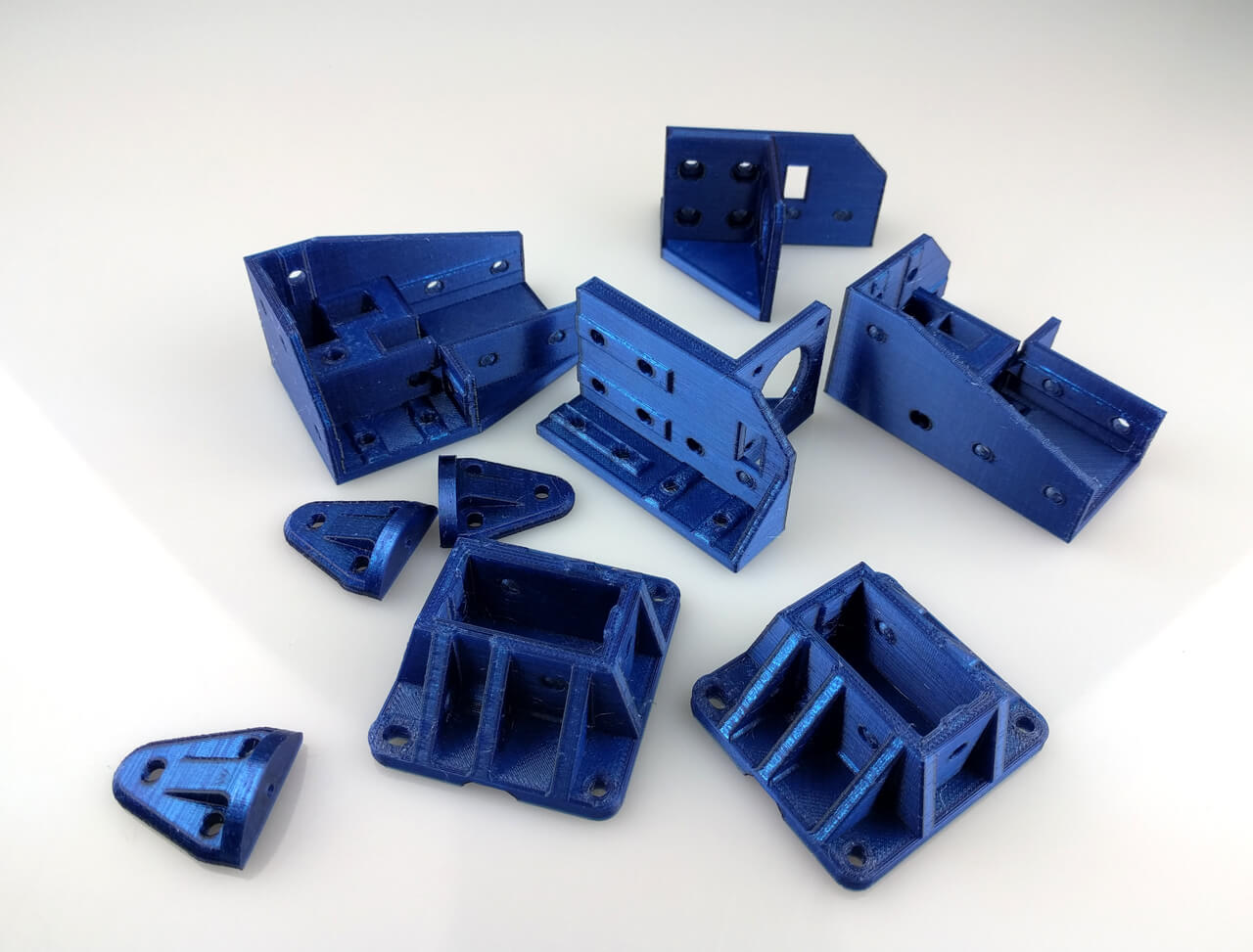- How FDM printers produce objects?
- What is PLA?
- What is ABS?
- What is PET?
- What is PETG?
- What is TPU?
- What is PC?
- What is Nylon?
- What is ASA?
- What is ULTEM?
- What to keep in mind when choosing a filament?
How FDM printers produce objects?
FDM printers are the most wide-spread 3D printing machines, ranging from desktop plug-n-play printers for children to professional systems adopted by manufacturing companies. FDM printers are equipped with a nozzle (or nozzles) that melt and extrude filament material and deposit an object layer-by-layer according to a code. FDM printers are easy and safe to use even at home, prints don’t necessarily require complicated post-processing techniques, and the range of materials and upgrades continues to grow with popularity. As a result, manufacturers always release different types of machines, tools and materials to the market to improve FDM 3D printing processes and meet demand. Let’s take a look at some commonly used filaments, their properties, advantages and disadvantages.
What is PLA?
PLA stands for Polylactic Acid and it’s the classic filament people 3D print with. PLA is a biodegradable and bioactive thermoplastic polyester that is made from natural products like corn starch, making it more environmentally-friendly compared to other plastics. Suitable applications for PLA include parts, prototypes and products that are not required to endure extreme stress.
Image: PLA part by Seaside 3D
PLA Advantages
Finished product:
- Layers deposited accurately gives a fine surface finish
- Easy to post-process
- Biodegradable
- Many colors available or can be colored easily
- Can be baked to improve strength
During the printing process:
- Easy and fast to 3D print
- Lower printing temperature
- Low shrinkage
PLA Disadvantages
Finished product:
- Not really durable
- Becomes softer (can be crooked or warped) at around 140°F (60°C)
- Bad UV light resistance
During the printing process:
- Sucks in moisture from the air
- Causes nozzle clogging sometimes
What is ABS?
ABS is short for Acrylonitrile butadiene styrene and it’s an amorphous polymer used in 3D printing. ABS is usually produced through the emulsion process from 3 components or recycled from itself. It’s widely used in producing a multitude of everyday goods like your keyboard keycaps. ABS is used when parts require extra strength; however, some improved composites are slowly starting to displace it.
Image: ABS parts by Cape_Olive
ABS Advantages
Finished product:
- Stiffness and durability
- Recyclable
- Easy to post-process and paint
- Abrasive resistant
- Withstands higher temperatures 212°F (around 100°C)
- Many colors and composites available
- Can be machined
During the printing process:
- Can be smoothed with acetone
ABS Disadvantages
Finished product:
- UV sensitive
During the printing process:
- Higher printing temperature
- Harder to print with
- Smells bad when heated
- Sucks in moisture from the air
What is PET?
Polyethylene terephthalate – that is what PET actually stands for, is a thermoplastic polymer resin of the polyester family. It’s combined from two monomers and used widely for almost everything – from bottles to clothes. This is the material that has a reputation for polluting our oceans. However, when used in production and prototyping, it has many benefits.
PET Advantages
Finished product:
- Can be food-safe
- Layers look nice and smooth
- Has some flexibility
- Moisture resistant
- Recyclable
- Quite tough and shock-resistant
- Can be semi-transparent
- Can be post-processed and painted
During the printing process:
- Not so hard to print with
- Printing temperature ranges between PLA and ABS
PET Disadvantages
Finished product:
- Has a certain gloss, so some details can be hard to notice and, on the contrary, some inner structures can be seen thanks to semi-transparency in some filaments;
- Medium heat resistance;
- Becomes softer at around 158°F (70°C);
During the printing process:
- Changes color while printing (from translucent to cloudy or semi-transparent)
- Becomes brittle if overheated during printing
What is PETG?
PETG is different to PET with that one letter, “G”, which stands for Glycol that is added to the material. It is a clear amorphous thermoplastic that improves PET by making it stronger and more durable which led to the rise of PETG.
Image: PETG parts by Seaside 3D
PETG Advantages
Finished product:
- Layers look nice and smooth
- Can be food-safe and even sterilized
- Prints are strong
- Recyclable
- Good heat and stress resistance
- Moisture resistant
During the printing process:
- Stays fine and solid even overheated during printing
- Medium difficulty to print with
- Printing temperature is between PLA and ABS
- Has low shrinkage
PETG Disadvantages
Finished product:
- Less PETG variations compared to PLA and ABS
- Scratches appear easier
- Sensitive to UV light
- Becomes softer at 176°F (around 80°C)
During the printing process:
- Can change color while printing (from translucent string to cloudy or semi-transparent)
What is TPU?
TPU or Thermoplastic polyurethane is a rubber-like material used in 3D printing to produce semi-flexible parts. Technically, it’s a polyurethane plastic and a block copolymer – its structure is made up of a chain of hard and soft segments.
TPU Advantages
Finished product:
- Flexible
- Good abrasion resistance
- Great resistance to oils and grease
- High strength
- Can be semi-transparent
- Withstands temperatures of up to 176° F (80°C)
- Wear resistant
During the printing process:
- Low shrinkage
TPU Disadvantages
Finished product:
- Difficult to post-process
- Difficult to glue parts
- Less variations than some plastic filaments.
During the printing process:
- Can be hard to 3D print with
- High printing temperature
What is PC?
Polycarbonate or simply PC – is a thermoplastic polymer containing carbonate groups in its structure that makes the filament much stronger and a nice alternative to ABS. Industrial PC can be used for medical applications, aircraft and construction, as well as fabricating bottles, glasses and electronics.
PC Advantages
Finished product:
- Strong
- Heat resistant
- Easy to post-process
- Can be sterilized
- Can be transparent
- Can be flame retardant
- Durable
During the printing process:
- Easier to print with compared to ABS
PC Disadvantages
Finished product:
- UV sensitive
During the printing process:
- High printing temperature
- Can be hard to print with
- Absorbs moisture a lot
What is Nylon?
Nylon is a material with a good reputation for prototypes thanks to its great mechanical properties. Nylon filaments can be created out of different polyamides with unique properties that can influence the level of toughness. This material is used for SLS 3D printing.
Nylon Advantages
Finished product:
- Can be coated, dyed and painted
- High tensile strength
- Durability
- Good quality of the parts
- Impact resistance
- Thin parts can be flexible
- Temperature resistance
During the printing process:
- A good alternative to ABS
Nylon Disadvantages
Finished product:
- Scratches can appear
During the printing process:
- Has some smell
- Hydroscopic (sucks a lot of moisture)
- Can be hard to print with due to its elasticity
What is ASA?
ASA – is an Acrylonitrile Styrene Acrylate and it is a thermoplastic originally created as an alternative to ABS. ASA’s main purpose – to deliver high-quality parts which are strong and can withstand UV-light as well as temperatures up to 208°F (98°C) or as low as - 85°F (- 65°C). ASA is highly recommended for parts used outdoors to resist the extremities of weather conditions.
ASA Advantages
Finished product:
- Strong and durable
- Lower color changes throughout the time
- High UV-light and weather resistance
- Withstands high and low temperatures
- More resistant to stress cracking (even more than ABS)
During the printing process:
- Can be acetone smoothed
ASA Disadvantages
Finished product:
- Performs more yellowing (losing color) outdoors compared to indoors
During the printing process:
- Can be hard to 3D print with
- High printing temperature
- Mildly hydroscopic (sucks some moisture from the air)
What is ULTEM?
Ultem is a group of branded materials used on some professional FDM printers. Chemically speaking, Ultem is a resin from the Polyetherimide (PEI) family. There are several types of Ultem resins that are all slightly different from one another. However, the whole family of these thermoplastics is supposed to be fairly heat-resistant, strong and deliver high-performance of objects printed.
ULTEM Advantages
Finished product:
- Heat resistant
- Stress resistant
- Some types are biocompatible and pass toxicity/smoke tests
- Chemical resistant
- Strong and dielectric
During the printing process:
- N/A
ULTEM Disadvantages
Finished product:
- N/A
During the printing process:
- Produces fumes 302 – 392°F (150 – 200°C)
- Can be hard to 3D print
- High printing temperature
What to keep in mind when choosing a filament?
As far as some of the more resistant and strong materials are concerned, they require high temperatures to print them which means that not all desktop machines are capable of producing parts from those filaments. With some upgrades of course, hobbyists can hack their machines and are able to print some of those in the comforts of their own home, however, the machine selected for printing and the owner/operator’s skills play a big role in determining the final outcome of your 3D prints including:
- Object’s strength - There are many factors which can help or ruin a strong and reliable material and print’s construction as well. Too low or too high temperature, poor cooling or storage makes even filaments like PET, ABS and Ultem perform weak, crack, bound or warp. Despite materials being able to handle stress, under bad printing conditions, strings of filament don’t bond with each other well resulting in failure.
- Surface quality - Apart from temperature, there are slicing settings, nozzle types and machine configurations (like material submission type and speed), which if set incorrectly, can cause color changes, spots and rough surfaces.
- Dimensional accuracy - Inaccurate prints can happen with all filaments, however, flexible materials like TPU, Nylon and others are harder to control at this point. Heated material lies perfectly but during printing the first layer cools and can start shrinking and warping, causing further deformations and inaccuracies of objects.
Also, it’s important to keep in mind that almost all the mentioned materials can be produced by various manufacturers and, as a result, differ in composition and properties. For example, a standard ABS could’ve been made with different proportions of the 3 monomers – so depending on the concentration of each, its performance ranges from being fine and strong to a nasty smelling mess.
Some extra components added to a filament can boost its properties and FDM printing is great for having many composites to experiment with. There is no all-purpose material that is suitable for all needs, so it’s always better to choose a filament based on your particular needs. Don’t try to include all possible properties into a print – usually fancier filaments are harder to work with and some of their advantages can nullify one another. Try to concentrate on the core purpose of your part because some weakness points of almost each filament can be improved by correcting settings, geometries and the right finishing.






